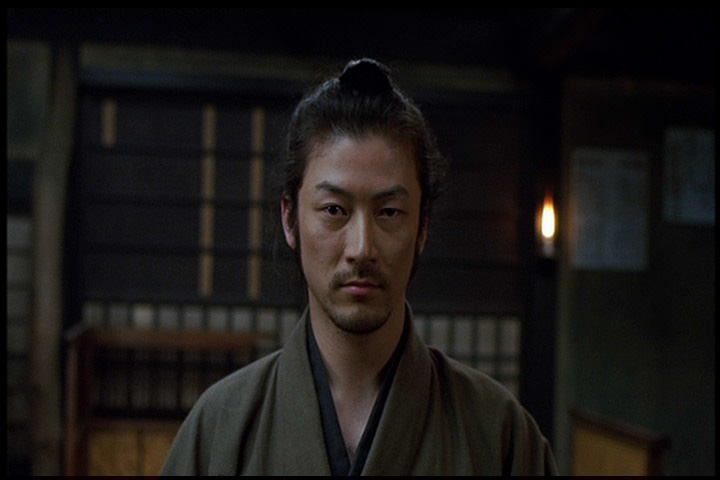“Chopping up statues, oh ho ho ho. Slicing up eyeballs, oh ho ho ho. Don’t know about you, but I am a Chien Edolusian…”
Imagine Ang Lee and Kill Bill race toward a platform where Akira Kurosawa and Takeshi Kitano both stand. As they reach the platform, Takeshi kicks both of them in the head. Kurosaw then places his hand on Kitano’s shoulder, while Juzo Itami and Toshiro Mifune can be seen laughing and clapping boisterously from across the stage. Good, because that’s pretty much what just happened.
The Violence
Although plenty of it, is not as over-the-top and purposefully pointless as QT’s. It doesn’t announce itself on the way in and then give an exit poll on the way out. The violence in Zatoichi seems completely appropriate for the story and befitting whatever genre the film has created for itself. In other words it is artistically pure.
The Back Story
The personal tragedy (or raison d’hate ya, if you will) of the young Noruto XX and XY, although a bit of a lengthy sideplot, was much more compelling and integrated into the plot than QT’s analagous, animated back story involving Vivian Hsu’s murdered cartoon parents. Our natural tendency, of course, is to want more back story on Zatoichi and not get involved with all the Michael Jackson-esque gender confusion of these poor children. But no, we don’t get to choose, and good thing too because it is better for us to not know any more about Zatoichi than we already do. And yet, for us to achieve catharsis, it is necessary we eat at least some bowlsful of psychosuffering. And so through the children’s tale, Kitano serves it.
The Characters
Although Zatoichi never officially gave up fighting, he is still very much the antihero by living or attempting to live in anonymity. This is vaguely similar to Clint Eastwood’s Unforgiven, although it differs in that we are constantly indulged with Zatoichi successes as Kitano (probably at great amusement to himself) dispenses with the customary watching the hero get beaten down for a while before he can then triumph in the end.
|
The Colors: Ceramic Blue And Wood
|
On top of his other talents, Kitano displays Peter Greenaway’s gift of still color, yet with some of Yasajuro Ozu’s ability to keep it all in frame. The ceramic blues and dark wood of the tavern scenes, the navy versus red kimonos, the gray and black of the rain on the ground are what I’m looking for.
The Meaning
The message, if there has to be one, is the same as Kurosawa’s Seven Samurai, which Pauline Kael didn’t much care for, which is that duty, battle, death, life, is what it is. Take it or leave it. The film’s only potential flaw is an occasional tendency to dip into Ang Lee-ism with a few extra pauses and tears here and there. And perhaps there is not enough in the way of sacrifice or a sense of loss to pay for our near constant exhilarations. Or is that true? [spoiler] For example. We can’t help but grow fairly attached to the charismatic bodyguard (anti-villain) and his wife. Their loss is indeed pain that we must endure. Kitano doesn’t quite make it the ordeal that was the loss of our all-star, navy-blue skirt-wearing swordsman in Seven Samurai. But a loss is a loss. And this one is particularly good because our sympathies are now crossing over, to the other team as it were. Kurosawa does the same thing when the honorable bad guy seeks a duel with Toshire Mifune in the end of Sanjuro, but here Kitano takes this concept and runs with it. [/spoiler]

